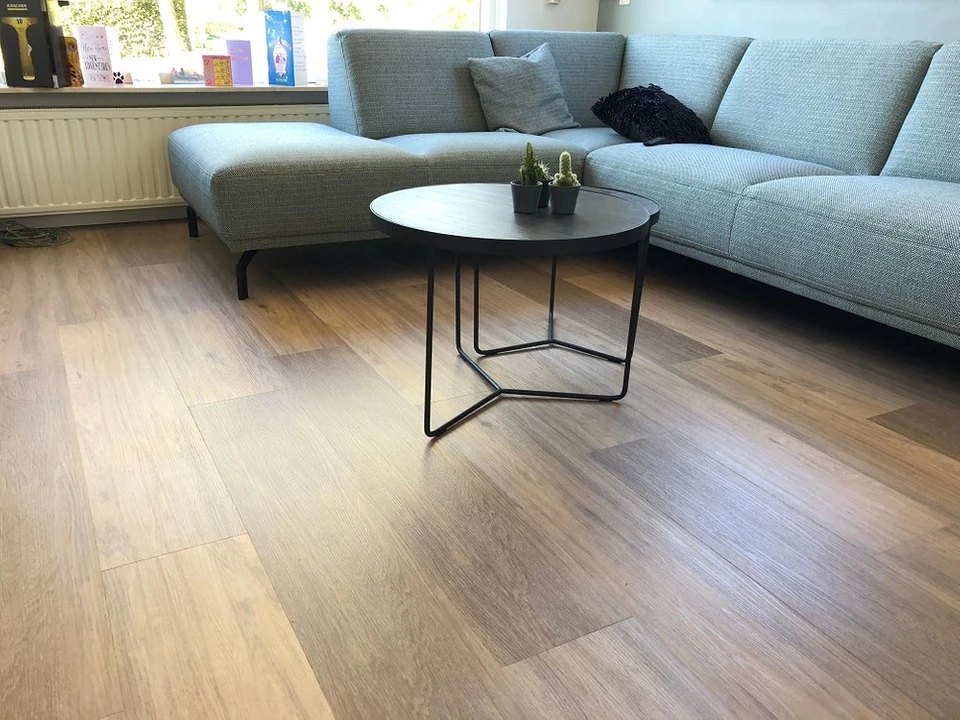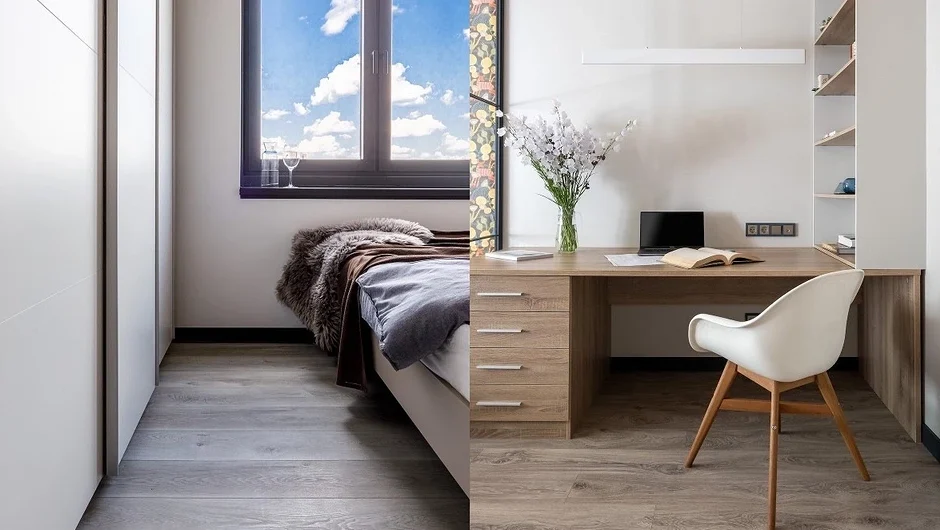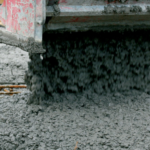We talk about the features of quartz vinyl and laminate, their advantages and disadvantages. We compare the characteristics of the materials and figure out how they differ from each other.
Choosing a floor covering is a very important undertaking. It must be strong, reliable, easy to use, durable and beautiful. There are a lot of different materials in the store, which makes choosing much more difficult. It is especially difficult to do if there is little information about the finishing. Let’s figure out what is better: quartz vinyl or laminate, which are popular among buyers. Let’s look at the features of both materials.
What is quartz vinyl
It is a multilayer floor cladding based on a composite polymer. The base is made of a mixture of polyvinyl chloride and quartz sand. Due to this, it is very strong, moisture-resistant and durable. A decorative film is laid on top of the base, the color of which determines the appearance of the coating. This can be an imitation of stone, wood, textiles, etc. The decor is covered with a transparent layer that protects it from abrasion and mechanical damage. The final layer is a polyurethane film. It prevents fading and preserves the color of the finish.
Some models also have a soft backing. It absorbs the sound that appears when moving on the surface, making installation easier. Quartzvinyl is produced in two versions. The first one is tiles. Can be of different sizes and shapes. Designed for gluing onto a prepared base. The second type is available in the form of strips with locking joints, like a laminated coating. By analogy, this material is called quartz vinyl laminate, so some people confuse these two claddings.
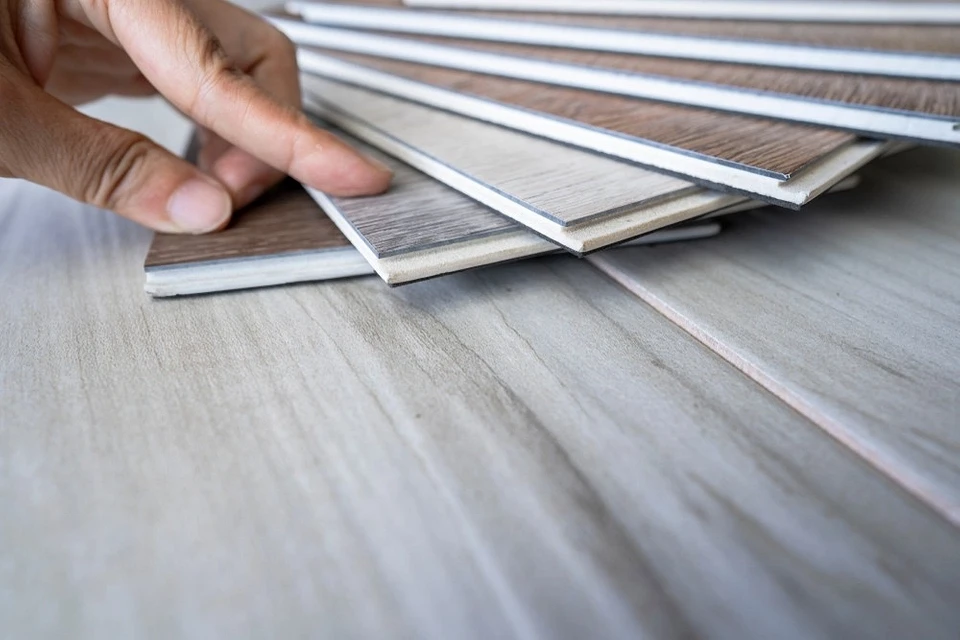
What is laminate
Multi-layer finish on a woodboard base. The material can be based on a plate made of MDF or HDF wood board. The first manufacturing technology assumes medium density, which gives the finished finish relatively little resistance to mechanical damage, fracture, etc. HDF boards are characterized by increased density, resistance to damage, and durability. But their price is also higher.
Kraft cardboard with a design is placed on top of any base. Most often this is an imitation of wood, parquet, stone, or ceramics. The decor is laminated with a protective film of small thickness. It prevents damage to the paint layer. The laminated coating is produced in the form of lamellas, on the edges of which there are locking joints. To install, just snap them into place. Initially, another variety was glued to the floor. Now it has practically not been released.
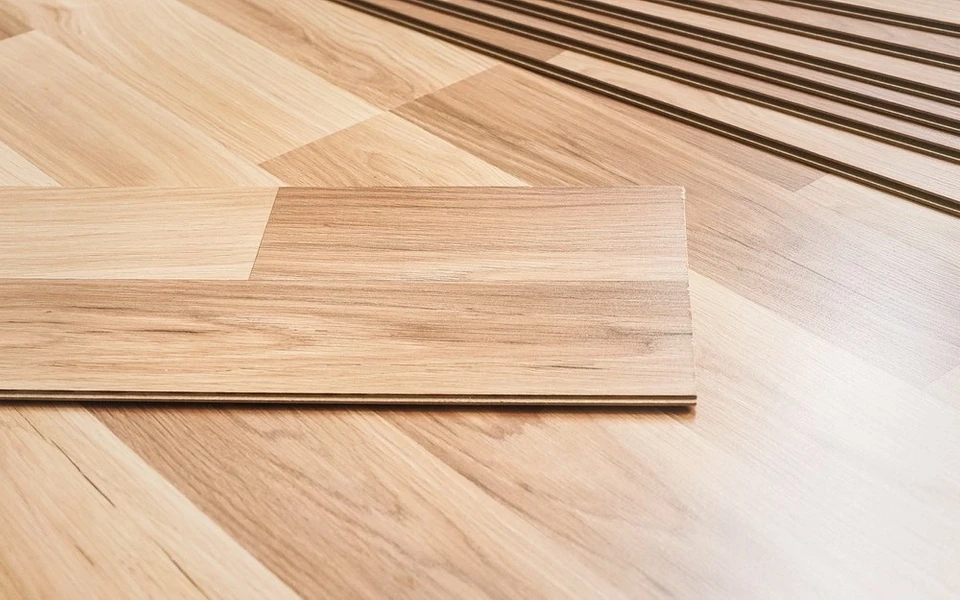
What is the difference between laminate and quartz vinyl: comparing the two materials
Both coatings are multi-layer, made using similar technologies, but they are completely different finishes. Let’s compare their properties to understand the difference between quartz vinyl and laminate.
Composition and environmental friendliness
The decorative layer of both materials is a smooth or embossed sticker. Most often this is environmentally friendly paper. On top of it is a polyurethane film on the quartz vinyl finish, and melamine or acrylic resin on the laminate finish. Both options are completely safe for humans.
The base layer is also completely different. In the first case, it is a mixture of PVC and sand, then a reinforcing layer and another vinyl layer. The result is a very strong plate.
The basis of laminated lamellas is wood dust, which is impregnated with a mixture of synthetic resins, rosin, paraffin, antiseptic, and other components. Their curing process can take place in different ways, resulting in either a particularly strong HDF or a regular MDF board.
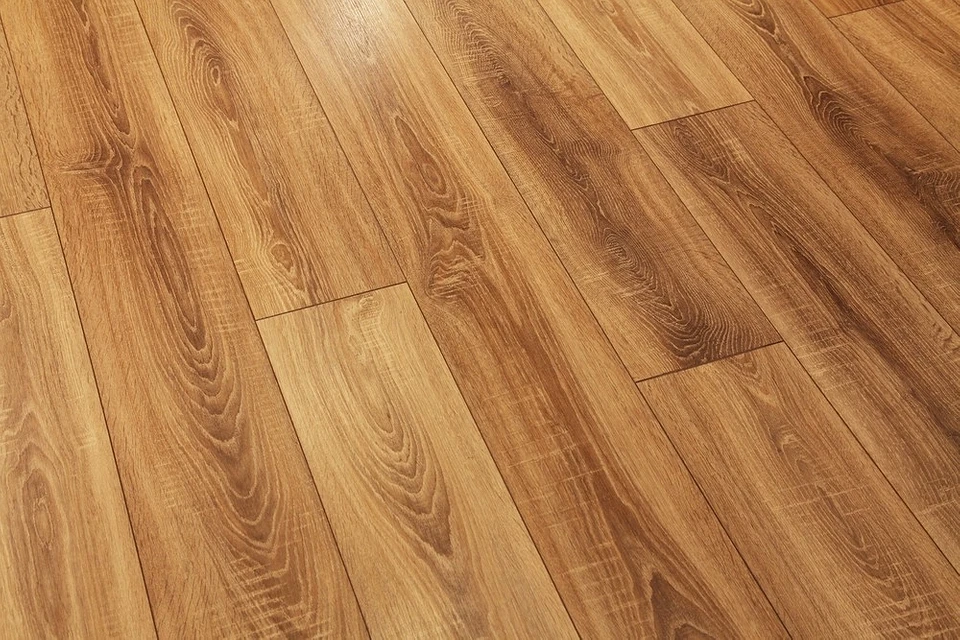
If we consider which is more environmentally friendly: laminate or quartz vinyl, we must admit that they are both considered completely safe for humans. However, the former contains binders with some degree of toxicity. Therefore, it is not recommended to lay it on a warm floor, and it is advisable to ventilate the room where it is laid more often. The raw material for quartz vinyl is completely environmentally friendly, but plasticizers are added to it during the production process. They can be potentially dangerous.
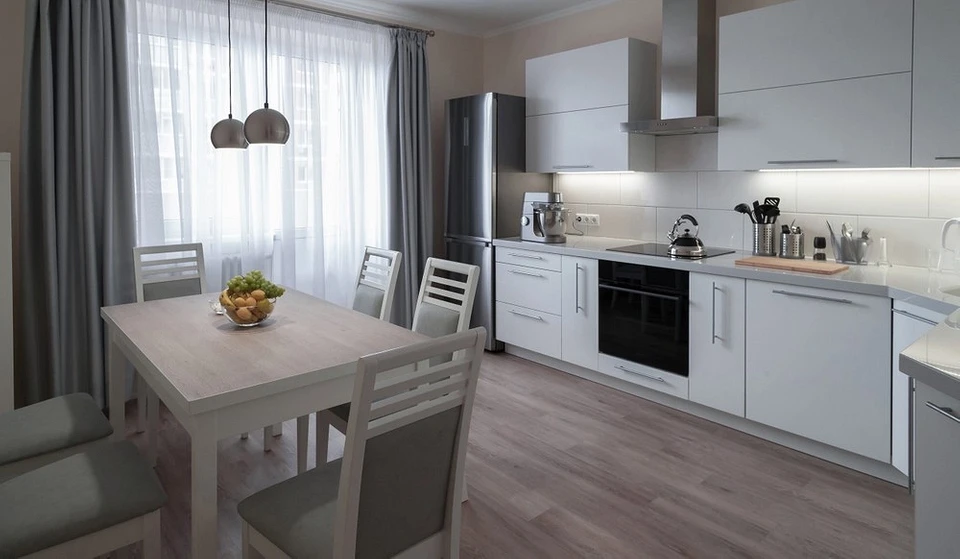
Appearance
Both popular coatings have a very wide selection of colors and textures that imitate a variety of materials: stone, wood, ceramics, textiles, etc. If desired, you can find cladding for any room in any design. At the same time, inexpensive laminate models can disappoint. They most often have a glossy smooth surface, the pattern is only vaguely similar to wood or stone. However, starting from the mid-price range, the picture changes. The surface of the board is embossed, the pattern is clear and indistinguishable from natural material.
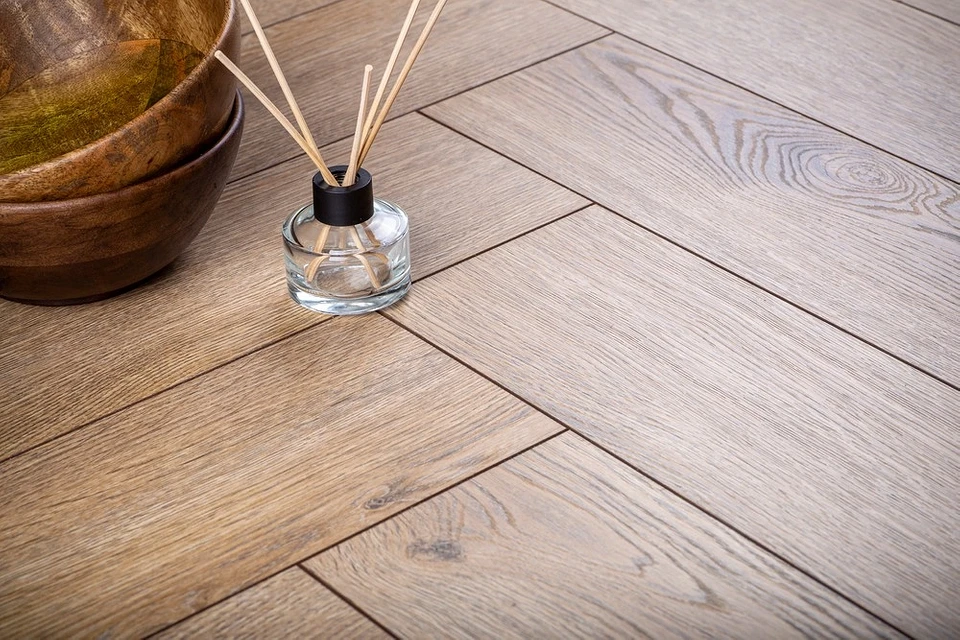
Moisture resistance
The basis of quartz vinyl is a composite polymer. It is insensitive to water, does not absorb it, and does not accumulate. Therefore, it is laid in rooms with different humidity levels, even “wet” ones. Laminated boards are not like that. Its base is made of compressed wood dust. Even though it is impregnated with various chemicals, when water gets in, the mass swells and deteriorates. Once it dries, it will no longer be able to return to its previous state. This is a significant drawback of the cladding.
The most vulnerable areas of the material are the ends. It is through them that moisture can get inside the lamella. Inexpensive models have the lowest moisture resistance. They can only be installed in dry rooms. In addition, they must be protected from liquids. Expensive moisture-resistant models are less sensitive to moisture. They are allowed to be installed in rooms with high humidity, but this must be done carefully, as water can damage them.
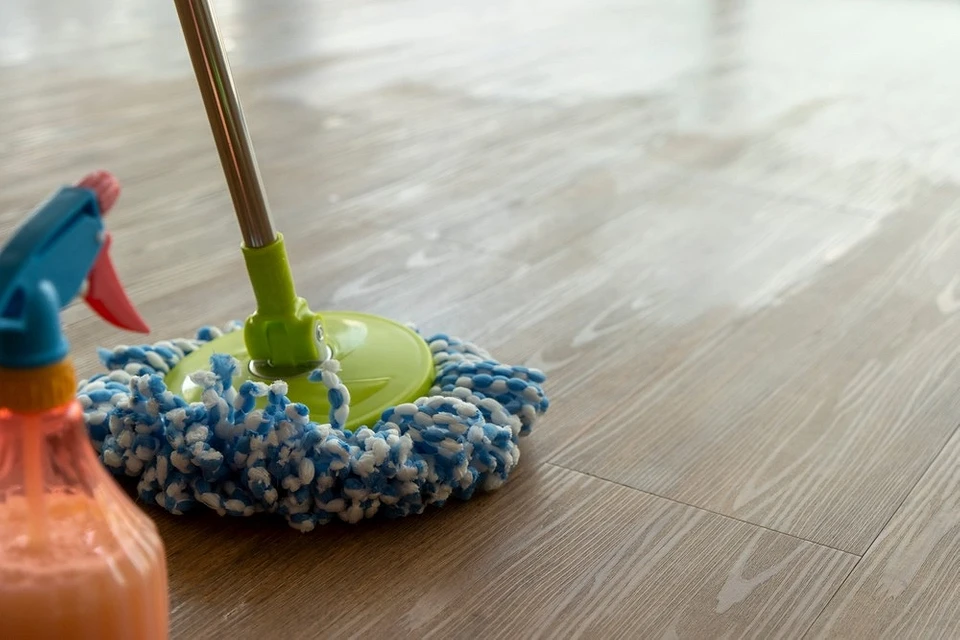
Thermal conductivity
When choosing, it is important what is warmer: quartz vinyl or laminate. We must understand that this is a subjective characteristic because it largely depends on how a particular person perceives it. However, if we compare the average thermal conductivity of laminate and quartz vinyl, it turns out that the first material has a higher one. This means that the laminated board releases heat faster and remains cool to the touch. Quartz vinyl coating behaves differently. It traps thermal radiation, its temperature is always approximately the same as that of the air in the room. That’s why it doesn’t seem cold. This is its significant advantage.
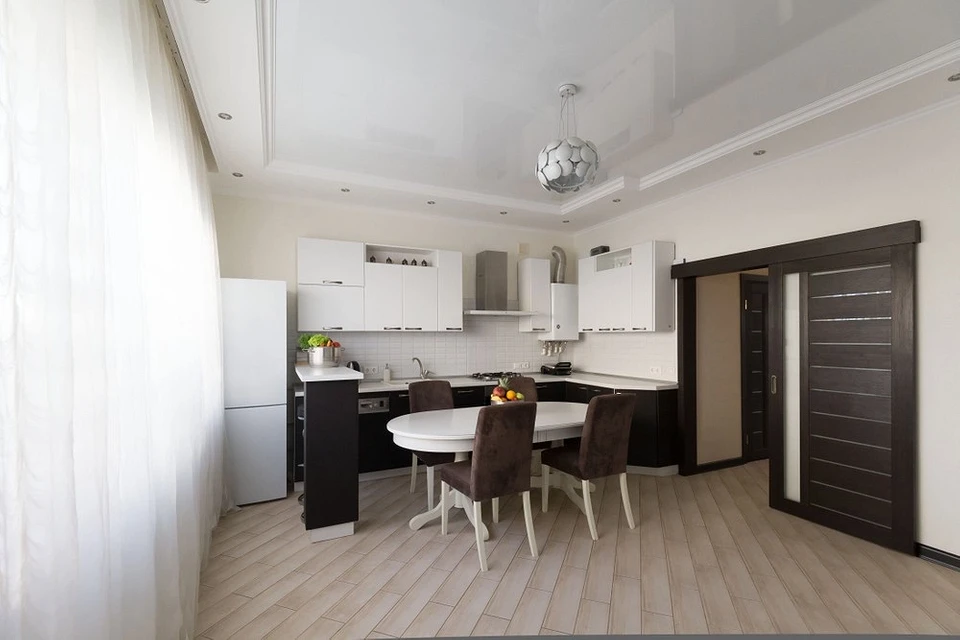
Easy to install
If we consider regular and quartz vinyl laminate, they are laid in the same way. They are placed on a leveled and dried base. It is advisable to cover it with a special substrate – this will reduce noise when walking and extend the life of the coating. The slats are laid according to the principle of a floating system, that is, with small gaps around the entire perimeter of the room. They are connected using tongue-and-groove locks. After assembly, a solid coating is obtained. Quartz vinyl tiles using the adhesive installation method are laid differently. They are glued to the base; technological gaps around the perimeter are not needed. In this case, the requirements for the base are not so strict – it does not need to be carefully leveled.
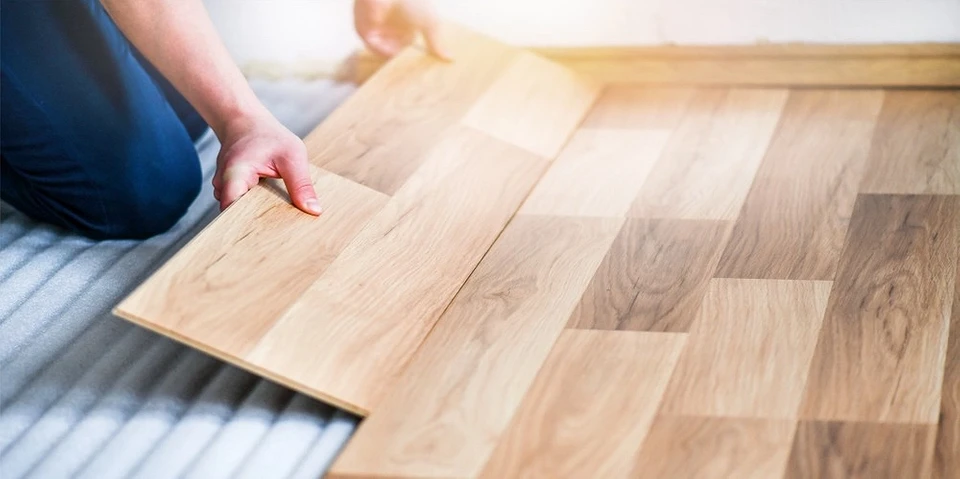
“Endurance” of the material
It is generally accepted that it depends on the class of coverage. This is true, but there are some nuances. There are three classes of laminated boards for household use: 31, 32, and 33. They indicate the density and strength of the base: the higher the class, the stronger it is. The wear resistance of the top layer is indicated differently. It is marked AC3 and beyond. The most wear-resistant models are marked AC4 and AC5.
For quartz vinyl coating, the grade indicates the wear resistance of the top layer. For household models – from 32 to 34, for commercial ones – 42, 43. The higher the class, the stronger the material.
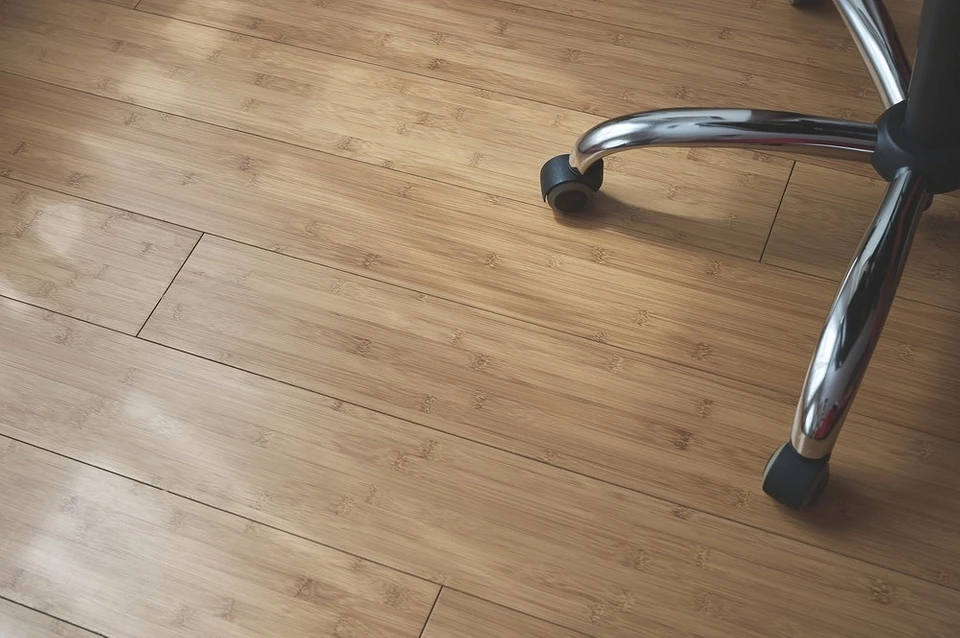
Price
If you compare what is more expensive: laminate or quartz vinyl, it may seem that the second material is.
But you need to understand that budget laminate models with not the best characteristics are cheap. True, they are also in demand.
High-strength moisture-resistant lamellas with UV protection in the premium segment are almost the same in price as quartz vinyl coating.
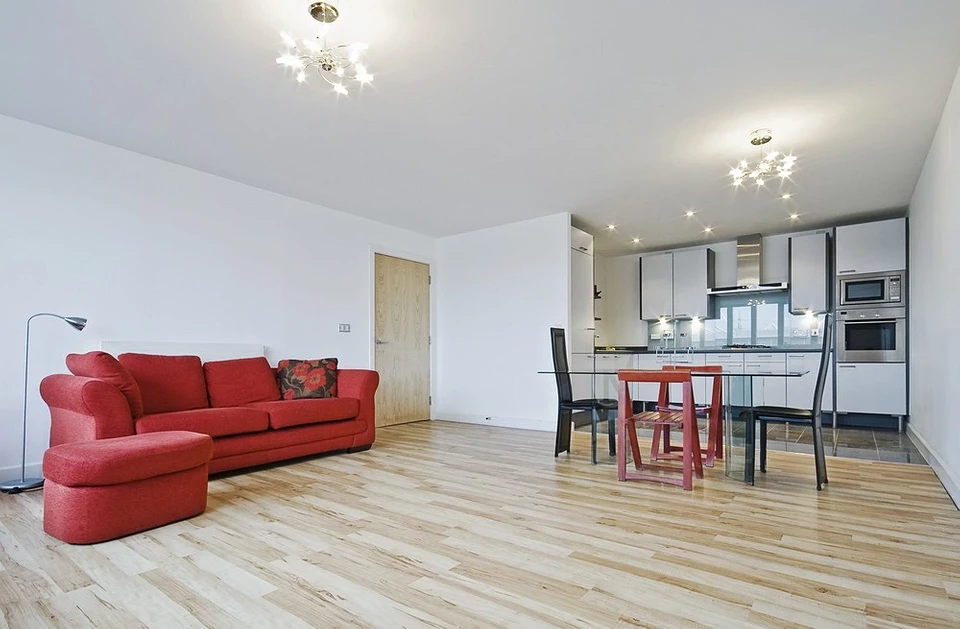
What to choose: laminate or quartz vinyl
To make it easier to make a choice, we have compiled a comparative table that shows the pros and cons of laminate and quartz vinyl.
| Laminate | Quartzvinyl | |
|---|---|---|
| Safety | Relative, contains formaldehyde. | Safe. |
| Moisture resistance | Low, it swells and deteriorates from water. | High. |
| Wear resistance | Relative. Best for expensive models. | High. |
| Thermal conductivity | Above average, feels like a “cool” floor. | Low, feels like a warm base. |
| Noise when moving | Noticeable, needs a backing to reduce it. | Small. |
| Easy to install | Average. | Average. |
| Durability | From 10 to 25 years, this determines the class of the material. | 20-25 years. |
| Features of care | Mainly dry cleaning. | Can be washed using detergents. |
Summarize. Vinyl is in many ways superior to laminated coating. They look similar in appearance, and with proper care, they will last about the same time. And yet, if funds allow, it is better to buy quartz vinyl trim for the entire apartment. If not, then it is worth purchasing for rooms with high humidity and for those where you need to regularly wash the floor. This is the bathroom, kitchen, etc. For the rest, laminate is suitable.
